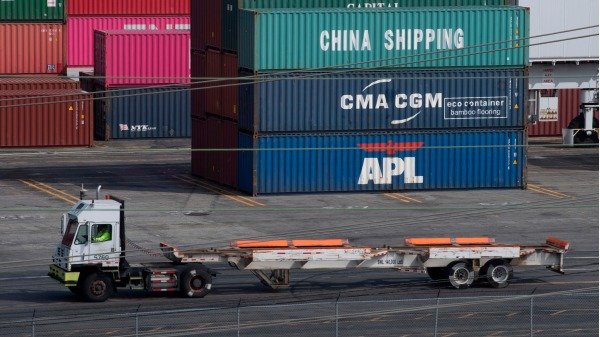China signed the Regional Comprehensive Economic Partnership Agreement (RCEP) on Nov. 15, joining 14 other countries in a free trade zone that will cut tariff and non-tariff barriers. Member countries signed the agreement via video conference to form the zone, which is set to encompass nearly one-third of the world’s GDP.
However, to date China has not fully met its commitments to the World Trade Organization (WTO), which it joined in 2001, raising doubts whether it will keep its promises in the new trade deal.
The RCEP was initiated by the 10 ASEAN countries (Indonesia, Malaysia, the Philippines, Thailand, Singapore, Brunei, Cambodia, Laos, Myanmar, and Vietnam) in 2012. China, Japan, South Korea, India, Australia, and New Zealand were invited to join the free trade agreement. According to Reuters, Indonesia is also likely to join the agreement.
As negotiations for RCEP progressed, the Obama administration initiated the alternative Trans-Pacific Partnership (TPP) with Vietnam, South Korea, Japan, New Zealand, Australia and 10 other countries in the Asia-Pacific region. This trade agreement also included environmental and labor provisions.
However, TPP was scuttled by the subsequent Trump administration on that grounds that it was detrimental to the interests of the United States.
Success
You are now signed up for our newsletter
Success
Check your email to complete sign up
In addition, India, the world’s second most populous country, withdrew from RCEP negotiations for fear that China would dump cheap products in the Indian market and damage its economy.
According to the China Times, Zhu Yin, an associate professor of public administration at the China University of International Relations, said, “The RCEP negotiations will undoubtedly make greater strides in lowering tariff barriers. There’s a possibility that tariffs for 95% or more products will be eliminated in the future. The market space will get larger; this is a major policy advantage for foreign trade enterprises.”
Data shows that China’s trade with ASEAN reached $481.81 billion through the first three quarters of this year, up 5 percent from a year ago. This makes ASEAN the largest trade partner to China. China has also increased its investment in ASEAN by 76.6 percent year-on-year.
Vietnamese Prime Minister and current-year ASEAN Chairman Nguyen Xuan Phuc said, “The conclusion of RCEP negotiation, the largest free trade agreement in the world, will send a strong message that affirms ASEAN’s leading role in supporting the multilateral trading system, creating a new trading structure in the region, enabling sustainable trade facilitation, revitalizing the supply chains disrupted by COVID-19 and assisting the post-pandemic recovery.”
Dubious RCEP commitments
However, the China is notorious in its opaque trade practices and its unwillingness to keep promises. The Office of the United States Trade Representative (USTR) criticized China for reneging on its WTO commitments in its “2019 Report to Congress On China’s WTO Compliance”, which was released on March 6 this year.
The report stated that China failed to comply with the expectation to “strictly adhere to WTO rules” and “support and pursue open, market-oriented policies.” Instead, “China has moved further away from open, market-oriented policies and has more fully embraced a state-led, mercantilist approach to the economy and trade.”
The report also detailed China’s unfair and market-distorting trade policies, including government subsidies that distort global steel and aluminum production, blocking foreign investment in its service industry, and increased government intervention in domestic industries.
True free trade
In an earlier commentary, Chinese scholar Zhou Fangzhou pointed out that the U.S. had honored its promises to China and lowered its tariffs, but China utilized various trade barriers and tariffs to hinder the entry of U.S. products. For example, China subject highly competitive American cultural product such as movies and art, and high-tech products such as pharmaceuticals and automobiles, financial products such as banks, securities and insurance to high tariffs and censorship. And America’s most competitive products such as internet (Google, Facebook, Twitter, Instagram, etc.) and media face an outright ban. In other words, American cannot compete in China, yet Chinese products can flow unimpeded in the United States.
“Free trade is one of the best things in the world, it holds the world together, promotes creativity, reduces poverty and brings peace,” wrote Zhou.
In Zhou’s view, if both sides follow the rules of free trade, and both governments allow the markets to choose without intervention, no one would have a reason to dispute a trillion-dollar trade deficit. However, when one side intervenes with regulations, high tariffs and barriers, that side would be in the wrong.
Follow us on Twitter or subscribe to our email list

















